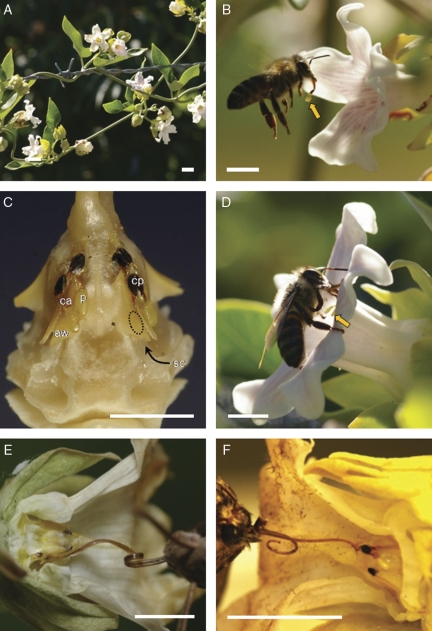Fig. 1.
The invasive A. sericifera is commonly found growing on urban fence-lines (A). Honeybees (A. mellifera) visit A. sericifera by initially hovering in front of the flower (B) and then landing on the petals (D). A flower of A. sericifera with the petals removed showing the gynostegium (C; aw = anther wing, ca = caudicle, cp = corpusculum, p = pollinium, sc = stigmatic chamber, the dashed oval indicates the position of a deposited pollinium). The photograph shows four whole pollinaria that have been deposited in two stigmatic chambers (two per chamber). This way of pollinarium deposition is considered unusual as pollinaria are typically deposited individually with only one pollinium lodged inside the stigmatic chamber (dashed oval, C), and not with one pollinium inside the stigmatic chamber while the other pollinarium is on the outside (see the text for further discussion). A sphingid moth, Temnora plagiata (E), and a noctuid, T. inferior (F, insert), found stuck inside the flower of A. sericifera (scale bars: A = 10 mm, D = 3 mm; all others = 5 mm).

